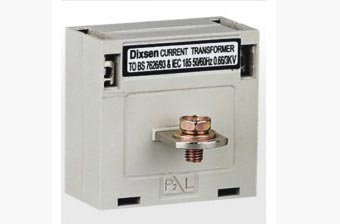
What is the difference between a current transformer and a voltage transformer?
Sep 19,2024
Current transformers (CTs) and voltage transformers (VTs), also known as potential transformers (PTs), are both types of instrument transformers used in electrical power systems, but they serve different purposes and have distinct characteristics. Here are the key differences:
1. Purpose:
- CT: Measures high currents by stepping them down to lower, measurable levels.
- VT: Measures high voltages by stepping them down to lower, safer levels.
2. Connection:
- CT: Connected in series with the circuit being measured.
- VT: Connected in parallel (across) the circuit being measured.
3. Primary Winding:
- CT: Usually has very few turns, often just one (the conductor passing through).
- VT: Has many turns to step down the voltage.
4. Secondary Winding:
- CT: Has many turns to produce a lower current.
- VT: Has fewer turns compared to the primary.
5. Open Circuit Behavior:
- CT: Must never be operated with an open secondary circuit as it can lead to dangerously high voltages.
- VT: Can be operated with an open secondary circuit without issues.
6. Ratings:
- CT: Rated in terms of current ratios (e.g., 100:5A).
- CT: The burden is typically expressed in VA or ohms.
- VT: The burden is typically expressed in VA.
8. Phase Shift:
- CT: Typically introduces a small phase shift between primary and secondary.
- VT: Generally has minimal phase shift.
9. Accuracy Classes:
- CT: Accuracy classes are defined differently than for VTs.
- VT: Has its own set of accuracy class definitions.
10. Applications:
- CT: Used for current measurement, overcurrent protection, and power measurement.
- VT: Used for voltage measurement, overvoltage protection, and power measurement.
11. Safety Considerations:
- CT: Requires careful handling due to the danger of open-circuiting the secondary.
- VT: Generally safer to handle but still requires proper safety precautions.
12. Size and Construction:
- CT: Often compact, can be wound or window type.
- VT: Generally larger due to insulation requirements.
Understanding these differences is crucial for proper selection, installation, and use of instrument transformers in electrical systems.
Prev News:What is a split core CT?
Next News:Why is CT ratio 1 or 5?
1. Purpose:
- CT: Measures high currents by stepping them down to lower, measurable levels.
- VT: Measures high voltages by stepping them down to lower, safer levels.
2. Connection:
- CT: Connected in series with the circuit being measured.
- VT: Connected in parallel (across) the circuit being measured.
3. Primary Winding:
- CT: Usually has very few turns, often just one (the conductor passing through).
- VT: Has many turns to step down the voltage.
4. Secondary Winding:
- CT: Has many turns to produce a lower current.
- VT: Has fewer turns compared to the primary.
5. Open Circuit Behavior:
- CT: Must never be operated with an open secondary circuit as it can lead to dangerously high voltages.
- VT: Can be operated with an open secondary circuit without issues.
6. Ratings:
- CT: Rated in terms of current ratios (e.g., 100:5A).
- VT: Rated in terms of voltage ratios (e.g., 11000:110V).
- CT: The burden is typically expressed in VA or ohms.
- VT: The burden is typically expressed in VA.
8. Phase Shift:
- CT: Typically introduces a small phase shift between primary and secondary.
- VT: Generally has minimal phase shift.
9. Accuracy Classes:
- CT: Accuracy classes are defined differently than for VTs.
- VT: Has its own set of accuracy class definitions.
10. Applications:
- CT: Used for current measurement, overcurrent protection, and power measurement.
- VT: Used for voltage measurement, overvoltage protection, and power measurement.
11. Safety Considerations:
- CT: Requires careful handling due to the danger of open-circuiting the secondary.
- VT: Generally safer to handle but still requires proper safety precautions.
12. Size and Construction:
- CT: Often compact, can be wound or window type.
- VT: Generally larger due to insulation requirements.
Understanding these differences is crucial for proper selection, installation, and use of instrument transformers in electrical systems.

